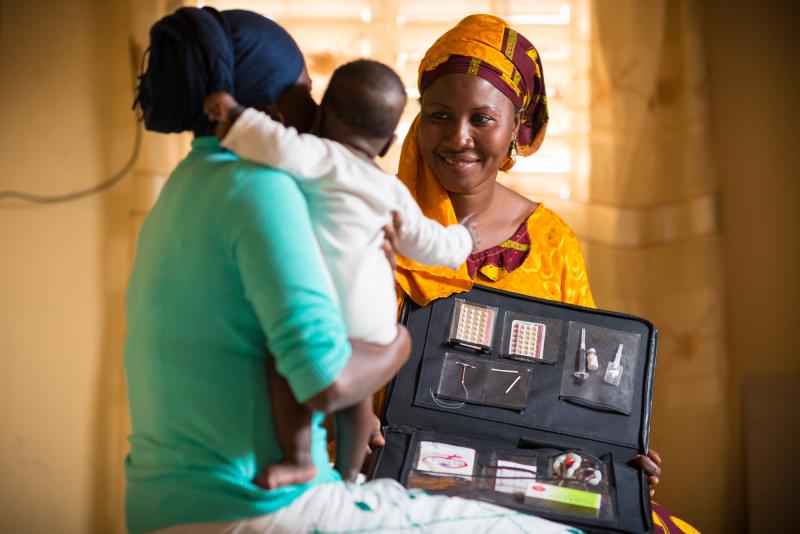Where We Work
See our interactive map


Photo by Clement Tardif for IntraHealth International.
In the global health community, we often talk about reaching the “last mile”—generally those who live in the hardest-to-reach places of the world, farthest from the health services they need. But from the point of view of those families, the last mile is in fact the first mile.
The global information and communications technology community seems to understand this more than we do in health. Studies such as this look directly at first-mile issues—that is, “how connectivity looks, feels, and behaves from the subscriber's perspective.” And researchers have done some work to shed light on how a true first-mile approach during an infectious disease outbreak like Ebola must take into account not only local resources, but also the importance of local know-how and cultural understanding.
So why, in family planning and many other essential services, do we usually refer to the last mile rather than the first?
For people in need of health care, that first mile is often full of potholes. That goes not only for remote rural communities, but for city-dwellers who face misinformation, cost barriers, or fears of lack of confidentiality when it comes to family planning services.
Closer-to-community care can help potential contraception users overcome a number of challenges, including time, distance, and money. But community-based family planning services—unless they are specifically designed to do so—don’t always help clear the real obstacles.
Around the world—including in the US—the top barriers continue to be lack of knowledge, misperceptions about the need to use contraception, and fears related to contraceptive safety.
To be highly effective and sustainable, community-based services need to be considered more than a type of vending-machine service.
As the Guttmacher Institute reported in 2016, more women globally cite fear of side effects and infrequent sex than lack of access to contraception as the reasons they don’t use contraception. Relatively few married women with unmet need said the barriers were their own unawareness of methods, high costs, access, or infertility. Women who have never been married cite similar reasons, including infrequent sex, fear of side effects, or “opposition to contraception”—as well as simply “not married.”
If awareness and access aren’t the main barriers, then closer-to-community services won’t in and of themselves help these women avoid unintended pregnancies.
In many countries, strategies to help clients cover that first mile include deploying mobile clinics and community health workers (CHWs). But despite long-term evidence of the effectiveness of CHWs in providing a variety of family planning methods, many countries have not embraced community-based provision of more than condoms or oral contraceptives. In countries where CHWs can provide a variety of methods—including longer-acting methods such as injectables and implants—use has gone up significantly, and maternal and child mortality have dropped.
But to be highly effective and sustainable, community-based services need to be considered more than a type of vending-machine service. CHWs need the skills to help clients conquer not only the very real battles of time and money, but also barriers in terms of knowledge and sociocultural beliefs. We need to understand several things:
In 2017, about 214 million women in poor countries reported that they want to avoid pregnancy but are not using a modern method of contraception. How many of these women could be helped with a true first-mile approach that puts clients’ individual beliefs, preferences, and barriers at the center of community-based family planning services?
This post was originally published on the K4Health blog.
Get the latest updates from the blog and eNews




